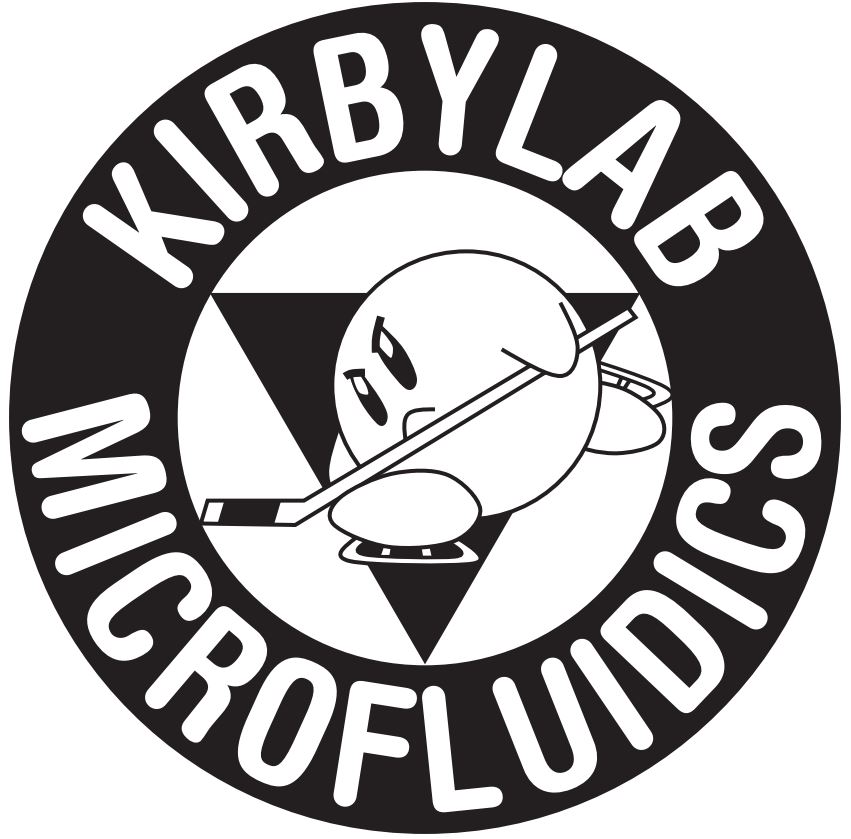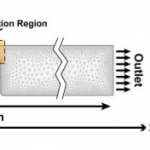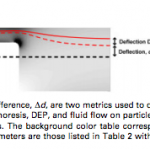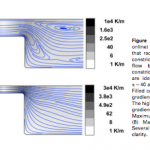Electrophoresis,2010: Electrothermal flow effects in insulating (electrodeless) dielectrophoresis systems
Citation:
Hawkins BG, Kirby BJ, Electrothermal flow effects in insulating (electrodeless) dielectrophoresis systems, Electrophoresis, 31:3622-3633, 2010. doi pdf
Abstract:
We simulate electrothermally induced flow in polymeric, insulator-based dielectrophoresis (iDEP) systems with DC-offset, AC electric fields at finite thermal Peclet number, and we identify key regimes where electrothermal (ET) effects enhance particle deflection and trapping. We study a single, two-dimensional constriction in channel depth with parametric variations in electric field, channel geometry, fluid conductivity, particle electrophoretic (EP) mobility, and channel electroosmotic (EO) mobility. We report the effects of increasing particle EP mobility, channel EO mobility, and AC and DC field magnitudes on the mean constriction temperature and particle behavior. Specifically, we quantify particle deflection and trapping, referring to the deviation of particles from their pathlines due to dielectrophoresis as they pass a constriction and the stagnation of particles due to negative dielectrophoresis near a constriction, respectively. This work includes the coupling between fluid, heat, and electromagnetic phenomena via temperature-dependent physical parameters. Results indicate that the temperature distribution depends strongly on the fluid conductivity and electric field magnitude, and particle deflection and trapping depend strongly on the channel geometry. Electrothermal (ET) effects perturb the EO flow field, creating vorticity near the channel constriction and enhancing the deflection and trapping effects. ET effects alter particle deflection and trapping responses in insulator-based dielectrophoresis devices, especially at intermediate device aspect ratios in solutions of higher conductivity. The impact of ET effects on particle deflection and trapping are diminished when particle EP mobility or channel EO mobility is high. In almost all cases, ET effects enhance negative dielectrophoretic particle deflection
and trapping phenomena.
Figures:







